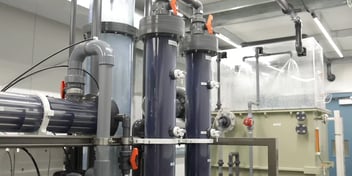Katherine bans local produce consumption following water contamination report
Local seafood and home-grown produce are off the table for Katherine residents, following the release of the Department of Defence’s interim report into per- and poly-fluoroalkyl substances (PFAS) contamination in the region.
The report details human health risk from potential PFAS exposure, with identified pathways including: drinking contaminated bore water; consuming large amounts of fruit and vegetables or eggs from poultry that have been watered with contaminated bore water; consuming seafood from Tindal Creek and Katherine river; and swimming in pools containing bore water.
The Department of Defence’s Steven Grzeskowrak told ABC Online that fish samples were found to contain PFAS at levels above food standards, which is 5.2 micrograms per kg.
"We did find that in the fish samples that we've taken [have] triggered what they call the trigger values in the food standard Australia and New Zealand thresholds," he said.
"That means it's appropriate to start looking at limiting intake of, in this case, fish from Katherine river."
Tested barramundi returned between 12 and 42 micrograms, up to six times the safe level, while cod and catfish contained between 6.2 and 88 micrograms, up to 17 times the value. In terms of vegetables, the concentration of PFAS was found to be higher in leafy greens.
"The uptake into fruits has been very low or nil in many cases. The uptake into leafy green vegetables tends to be higher,” Grzeskowrak said.
Health Minister Greg Hunt, Defence Minister Marise Payne and NT Senator Nigel Scullion stated that government will offer a $5.7 million community support package to Katherine residents, including voluntary blood testing, counselling services and an epidemiological study.
"Following consideration of the risk assessment's findings, enough information is now known about the potential exposure pathways to provide a community support package," they stated.
"The Australian Government recognises that the uncertainty around exposure to PFAS is causing stress and anxiety in affected communities and is committed to addressing communities' concerns.”
The interim report comes in the wake of 16 PFAS contamination sites located around Australia in connection with the use of firefighting foams during routine drills at RAAF bases.
The department has not commented on how long residents may have been exposed to the toxic chemicals.
If you’d like to learn more about the challenges of PFAS removal in water treatment, check out the Ozwater’18 technical program here.

